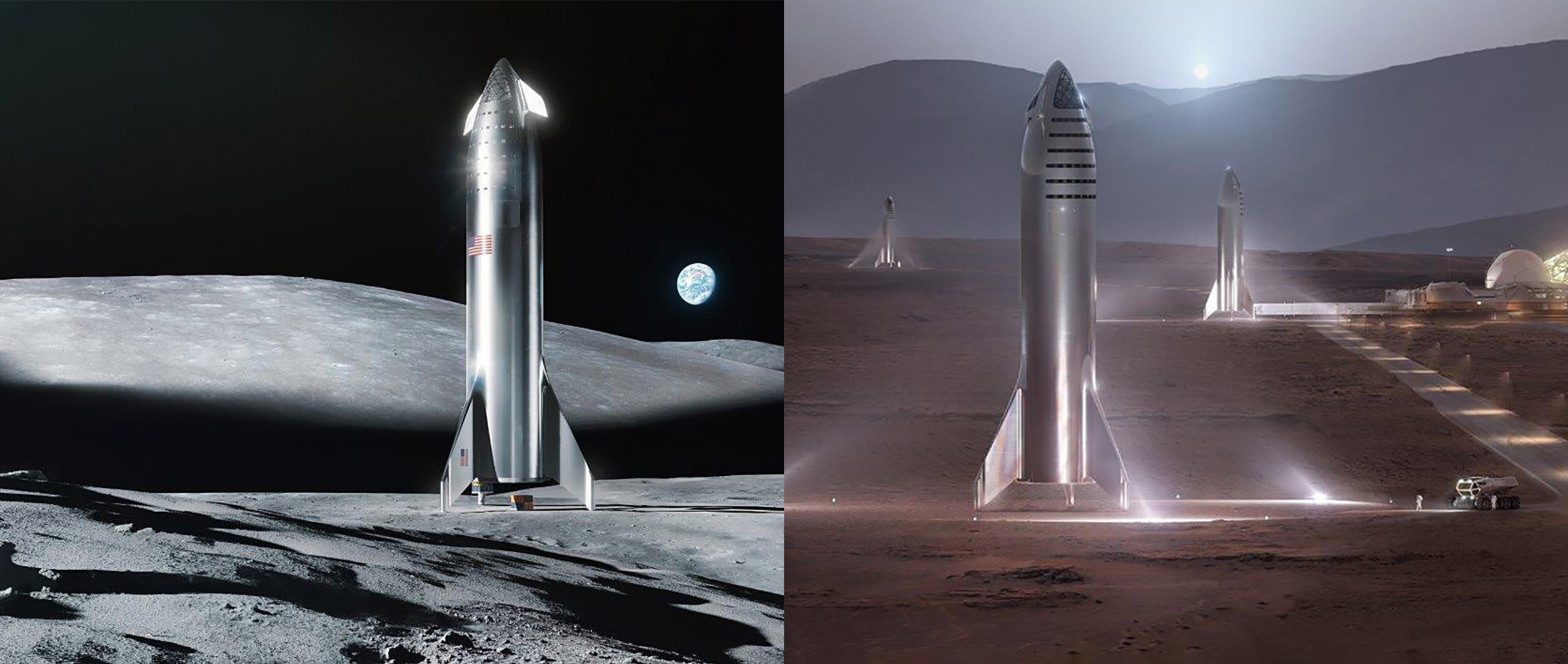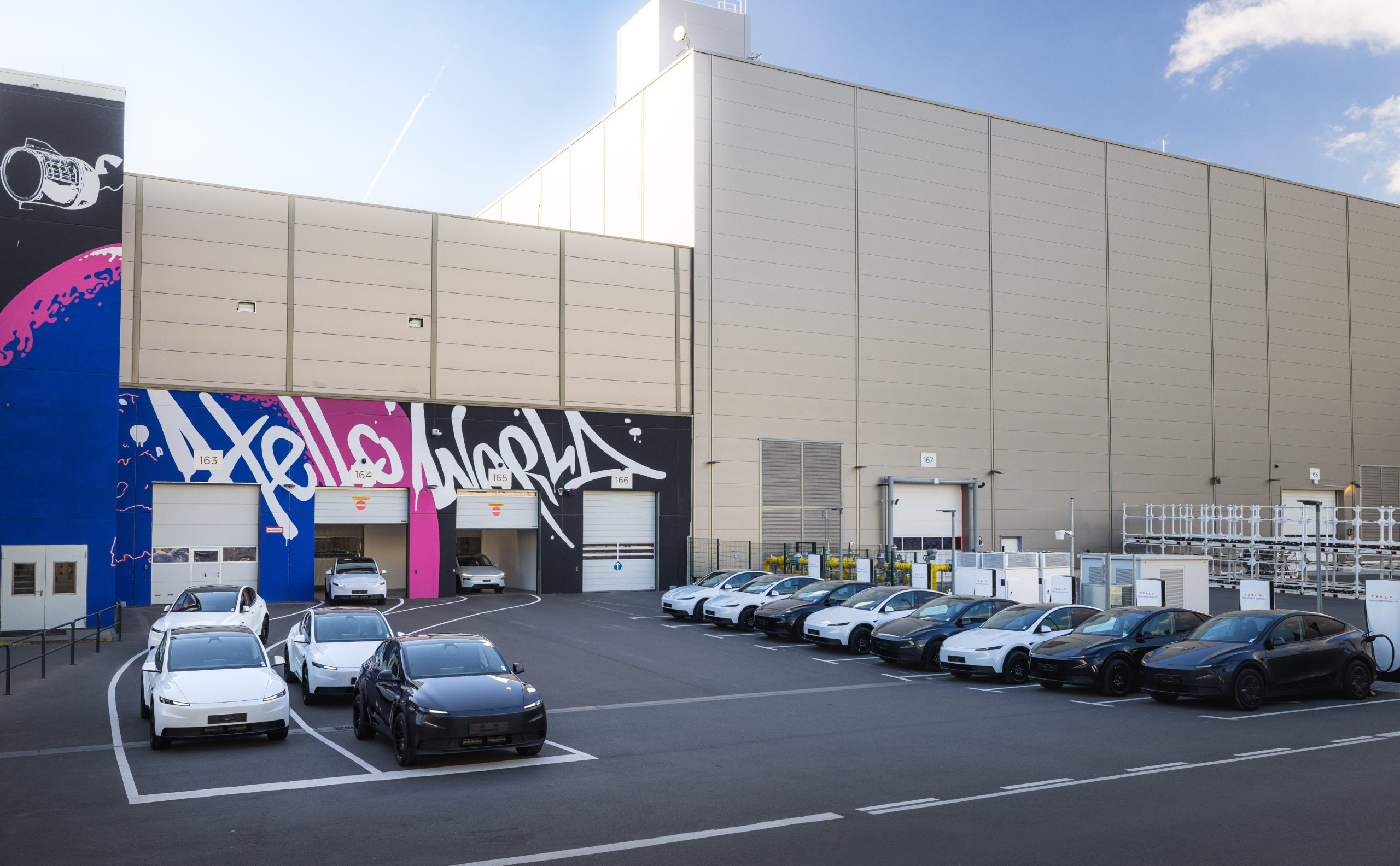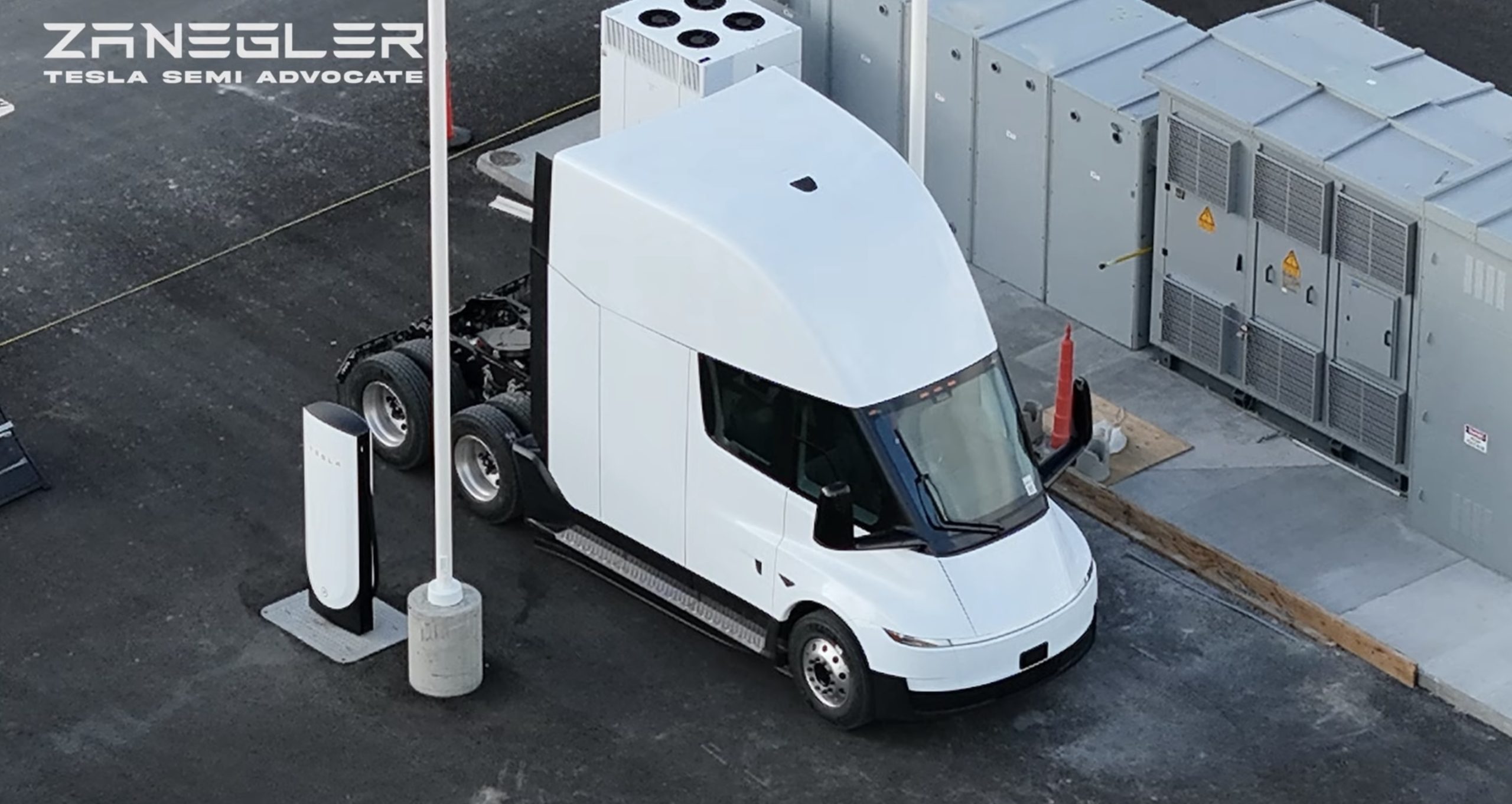

News
SpaceX’s Elon Musk says landing Starship on the Moon could be easier than convincing NASA
Speaking in an interview with TIME Magazine’s Jeffrey Kluger, SpaceX CEO Elon Musk telegraphed some clear, latent frustration with US space agency NASA, indicating that quite literally building Starship and landing it on the Moon could be easier than convincing NASA that the company is serious.
Although minor progress has been made in the last six or so months, NASA headquarters – for the most part – still effectively operates as if SpaceX’s next-generation launch vehicle plans do not exist, all while the agency is seriously considering other similarly unproven rockets with years of development remaining. In light of this frustrating inconsistency, Musk has taken to publicly acknowledging that developing, building, and launching Starship completely internally may be an easier (and faster) fight to win than attempting to convince NASA to assist in Starship development or even just be willing to use it as a launch option.
NASA assistance or support could come in any number of forms, ranging from a cost-sharing development contract, a developmental launch contract like the US Air Force’s STP-2 Falcon Heavy mission, or something as basic as publicly expressing support for the SpaceX program and a willingness to launch NASA payloads on it down the road. For now, the closest SpaceX has gotten to public NASA interest in and acknowledgment of Starship is an official Starship render posted by the Goddard Space Flight Center (GSFC).
In a sign of just how unengaged NASA is, the closest SpaceX’s Starship/Super Heavy vehicle has gotten to an acknowledgment from NASA headquarters is quite literally having an outdated BFR render subtly included in a few slideshows and documents published less than two months ago (late May 2019).
Ironically, despite the fact that Starship – first and foremost – is designed to be a giant, human-rated reusable spacecraft nominally capable of carrying dozens of astronauts into space and back, the US military appears to have been far more receptive to Starship. This is despite the fact that a BFR-heavy bid may have cost SpaceX a development contract last year. Even with the challenges such an ambitious vehicle poses, the US Department of Defense is still interested in at least discussing potential use-cases and providing input that might influence SpaceX’s final design.
Speaking in September 2018, CEO Elon Musk indicated SpaceX’s BFR (now Starship/Super Heavy) program was likely to cost ~$5B – no less than $2B and no more than $10B. However, this answer – provided off the cuff as a response to a reporter’s question – was almost certainly directed at BFR prior to a radical move from carbon composite structures and tanks to stainless steel. Since then, Musk has made some radical claims about the potential of an efficient, stainless-steel rocket, indicating that it could actually cost less to build than Falcon 9 – a far smaller rocket with a fraction of the performance.
In other words, if the potentially low cost of the vehicle itself also translates to a low development cost, SpaceX could quite feasibly develop Starship/Super Heavy from scratch with nothing more than traditional investment rounds. In the first half of 2019 alone, SpaceX has raised more than $1B in funding through three separate rounds, all of which have been described by Musk and other executives as “oversubscribed” – the demand for SpaceX equity far outstrips supply.
“If it were to take longer to convince NASA and the authorities that we can do it versus just doing it, then [SpaceX] might just do it [ourselves]. It may literally be easier to just land Starship on the moon than try to convince NASA that we can.”
— Elon Musk, July 12th, 2019, via TIME Magazine
As such, unless NASA’s attitude undergoes rapid changes, SpaceX may simply leave the agency behind when it comes to space exploration beyond low Earth orbit. In the event that quite literally developing, building, and launching a giant, stainless steel rocket and spaceship is faster, more efficient, and less disruptive than trying to convince NASA to get its foot in the door, SpaceX might have to forge its own path. If SpaceX can raise enough funding to develop its next-generation rocket independently, what comes next is anyone’s guess.
Ultimately, Musk believes that SpaceX can make that Starship Moon landing happen as few as two years from now, with the first crewed landing potentially coming as few as one or two years after that. All told, this ambitious timeline would see SpaceX land humans on the Moon – perhaps entirely commercially – as early as 2022 or 2023.
Check out Teslarati’s Marketplace! We offer Tesla accessories, including for the Tesla Cybertruck and Tesla Model 3.

News
Tesla Supercharger network delivers record 6.7 TWh in 2025
The network now exceeds 75,000 stalls globally, and it supports even non-Tesla vehicles across several key markets.

Tesla’s Supercharger Network had its biggest year ever in 2025, delivering a record 6.7 TWh of electricity to vehicles worldwide.
To celebrate its busy year, the official @TeslaCharging account shared an infographic showing the Supercharger Network’s growth from near-zero in 2012 to this year’s impressive milestone.
Record 6.7 TWh delivered in 2025
The bar chart shows steady Supercharger energy delivery increases since 2012. Based on the graphic, the Supercharger Network started small in the mid-2010s and accelerated sharply after 2019, when the Model 3 was going mainstream.
Each year from 2020 onward showed significantly more energy delivery, with 2025’s four quarters combining for the highest total yet at 6.7 TWh.
This energy powered millions of charging sessions across Tesla’s growing fleet of vehicles worldwide. The network now exceeds 75,000 stalls globally, and it supports even non-Tesla vehicles across several key markets. This makes the Supercharger Network loved not just by Tesla owners but EV drivers as a whole.
Resilience after Supercharger team changes
2025’s record energy delivery comes despite earlier 2024 layoffs on the Supercharger team, which sparked concerns about the system’s expansion pace. Max de Zegher, Tesla Director of Charging North America, also highlighted that “Outside China, Superchargers delivered more energy than all other fast chargers combined.”
Longtime Tesla owner and FSD tester Whole Mars Catalog noted the achievement as proof of continued momentum post-layoffs. At the time of the Supercharger team’s layoffs in 2024, numerous critics were claiming that Elon Musk was halting the network’s expansion altogether, and that the team only remained because the adults in the room convinced the juvenile CEO to relent.
Such a scenario, at least based on the graphic posted by the Tesla Charging team on X, seems highly implausible.
News
Tesla targets production increase at Giga Berlin in 2026
Plant manager André Thierig confirmed the facility’s stable outlook to the DPA, noting that Giga Berlin implemented no layoffs or shutdowns amid challenging market conditions.

Tesla is looking positively toward 2026 with plans for further growth at its Grünheide factory in Germany, following steady quarterly increases throughout 2025.
Plant manager André Thierig confirmed the facility’s stable outlook to the Deutsche Presse-Agentur (DPA), noting that Giga Berlin implemented no layoffs or shutdowns despite challenging market conditions.
Giga Berlin’s steady progress
Thierig stated that Giga Berlin’s production actually rose in every quarter of 2025 as planned, stating: “This gives us a positive outlook for the new year, and we expect further growth.” The factory currently supplies over 30 markets, with Canada recently being added due to cost advantages.
Giga Berlin’s expansion is still underway, with the first partial approval for capacity growth being secured. Preparations for a second partial approval are underway, though the implementation of more production capacity would still depend on decisions from Tesla’s US leadership.
Over the year, updates to Giga Berlin’s infrastructure were also initiated. These include the relocation of the Fangschleuse train station and the construction of a new road. Tesla is also planning to start battery cell production in Germany starting 2027, targeting up to 8 GWh annually.
Resilience amid market challenges
Despite a 48% drop in German registrations, Tesla maintained Giga Berlin’s stability. Thierig highlighted this, stating that “We were able to secure jobs here and were never affected by production shutdowns or job cuts like other industrial sites in Germany.”
Thierig also spoke positively towards the German government’s plans to support households, especially those with low and middle incomes, in the purchase and leasing of electric vehicles this 2026. “In our opinion, it is important that the announcement is implemented very quickly so that consumers really know exactly what is coming and when,” the Giga Berlin manager noted.
Giga Berlin currently employs around 11,000 workers, and it produces about 5,000 Model Y vehicles per week, as noted in an Ecomento report. The facility produces the Model Y Premium variants, the Model Y Standard, and the Model Y Performance.
News
Tesla revamped Semi spotted, insane 1.2 MW charging video releases
These developments highlight Tesla’s ongoing refinements to the vehicle’s design and infrastructure.

Tesla is gearing up for high-volume Semi production in 2026, with the Class 8 all-electric truck’s revamped variant being spotted in the wild recently. Official footage from Tesla also showed the Semi achieving an impressive 1.2 MW charging rate on a charger.
These developments highlight Tesla’s ongoing refinements to the vehicle’s design and infrastructure.
Revamped Tesla Semi sighting
Tesla Semi advocate @HinrichsZane, who has been chronicling the progress of the vehicle’s Nevada factory, recently captured exclusive drone footage of the refreshed Class 8 truck at a Megacharger stall near Giga Nevada. The white unit features a full-width front light bar similar to the Model Y and the Cybercab, shorter side windows, a cleared fairing area likely for an additional camera, and diamond plate traction strips on the steps.
Overall, the revamped Semi looks ready for production and release. The sighting marks one of the first real-life views of the Class 8 all-electric truck’s updated design, with most improvements, such as potential 4680 cells and enhanced internals, being hidden from view.
1.2 MW charging speed and a new connector
The official Tesla Semi account on X also shared an official video of Tesla engineers hitting 1.2 MW sustained charging on a Megacharger, demonstrating the vehicle’s capability for extremely rapid charging. Tesla Semi program lead Dan Priestley confirmed in a later post on X that the test occurred at a dedicated site, noting that chargers at the Semi factory in Nevada are also 1.2 MW capable.
The short video featured a revamped design for the Semi’s charging port, which seems more sleek and akin to the NACS port found in Tesla’s other vehicles. It also showed the Tesla engineers cheering as the vehicle achieved 1.2 MW during its charging session. Dan Priestley explained the Semi’s updated charging plug in a post on X.
“The connector on the prior Semi was an early version (v2.4) of MCS. Not ‘proprietary’ as anyone could have used it. We couldn’t wait for final design to have >1MW capability, so we ran with what had been developed thus far. New Semi has latest MCS that is set to be standard,” the executive wrote in a post on X.
Check out the Tesla Semi’s sighting at the Nevada factory in the video below.








